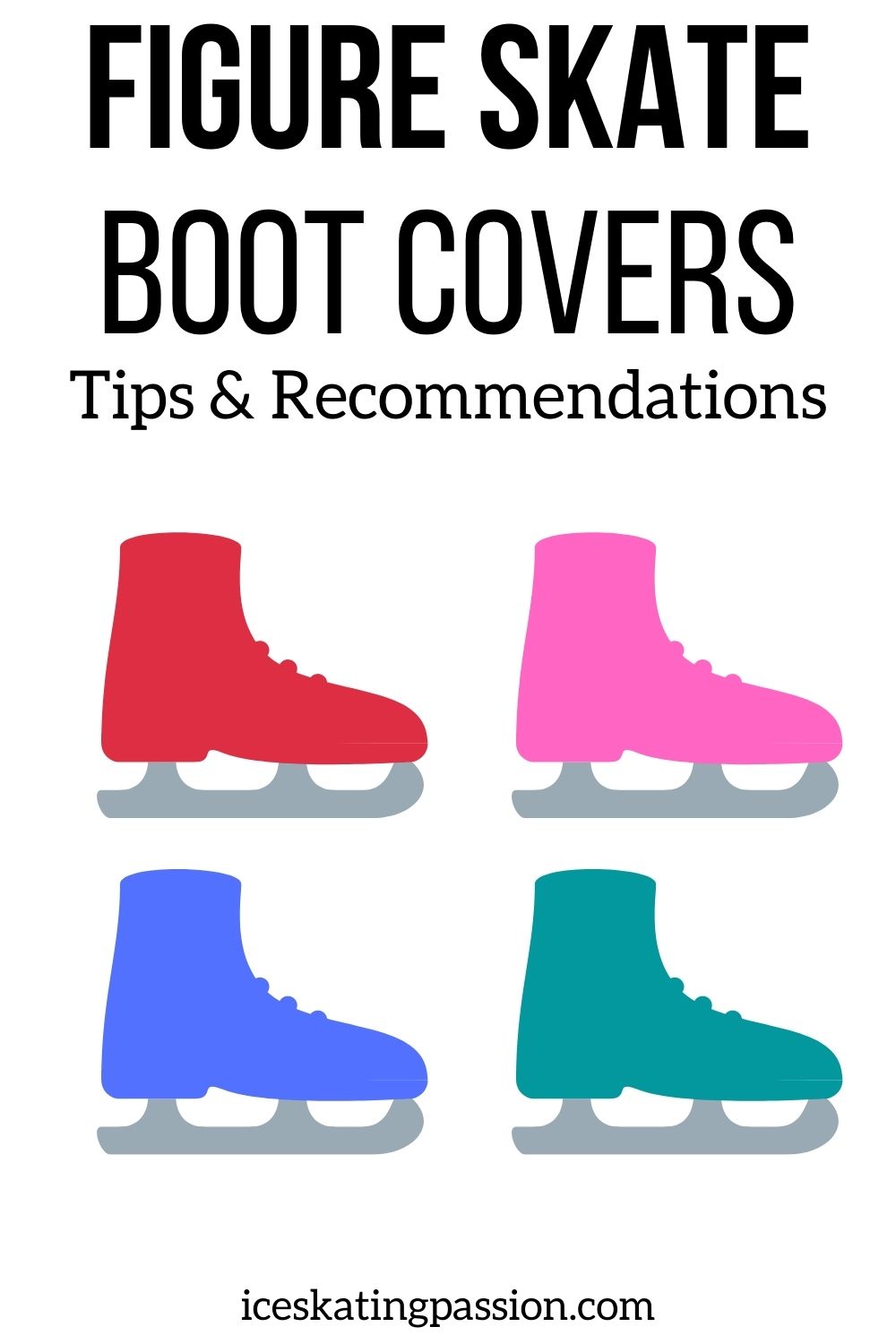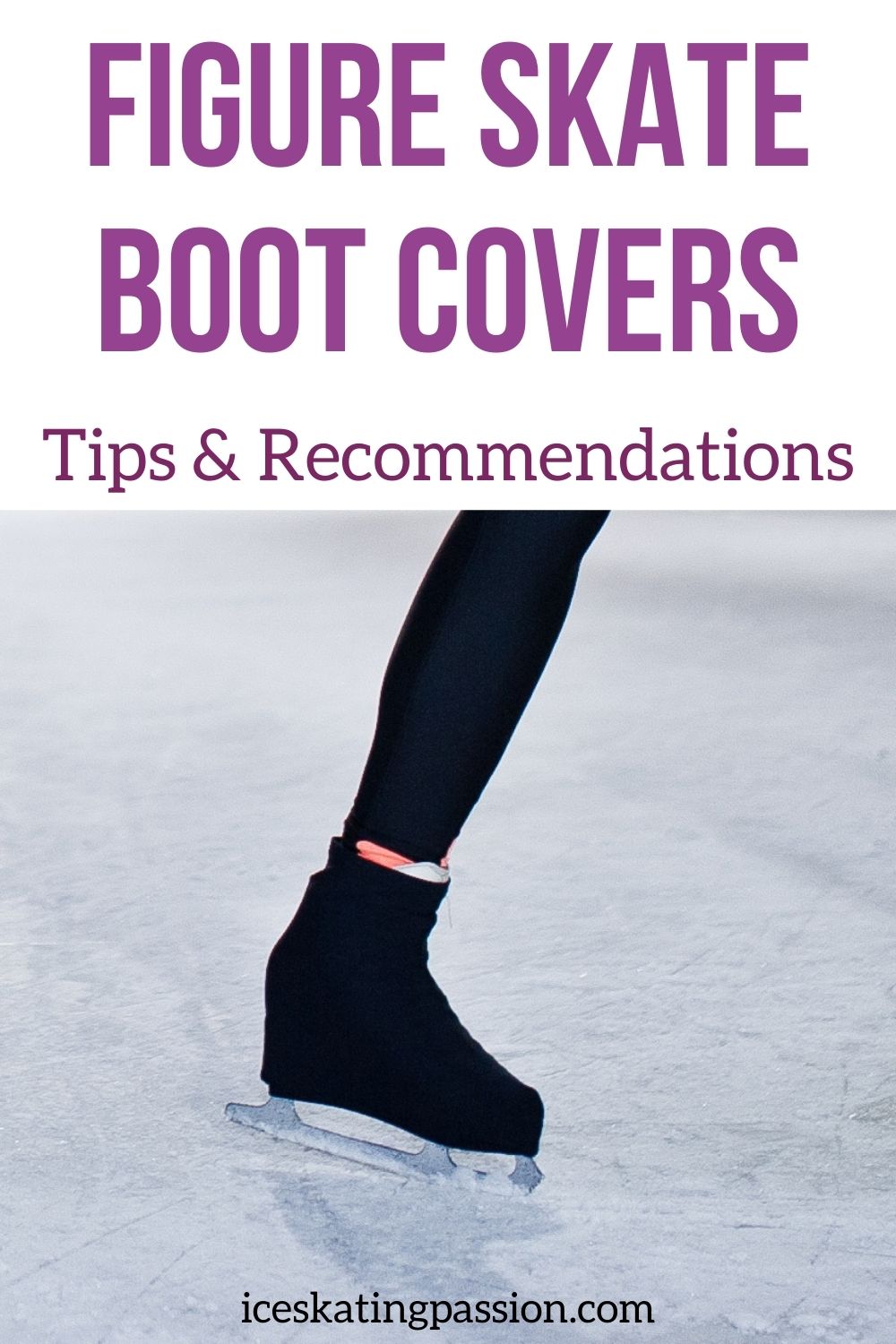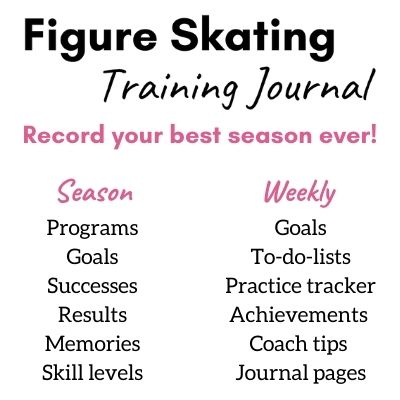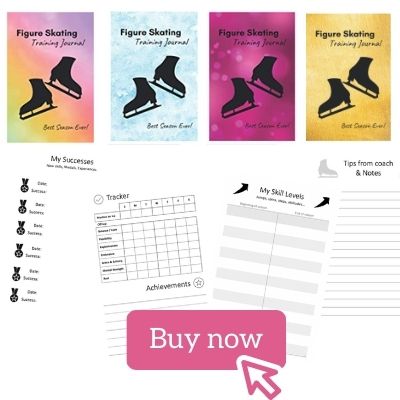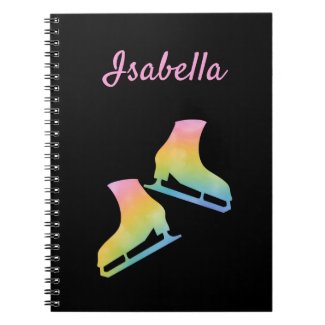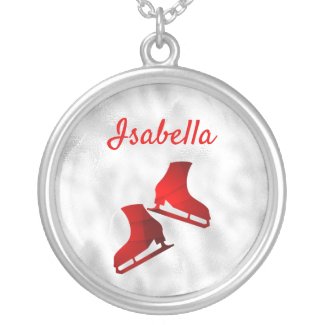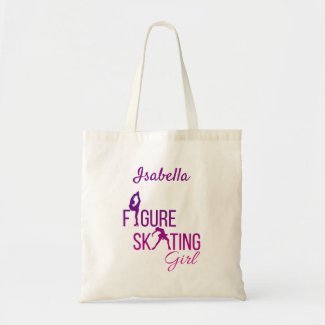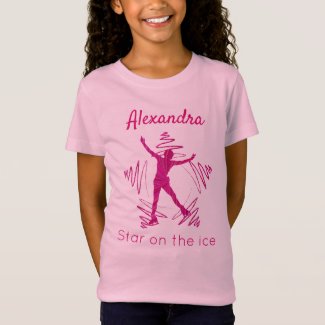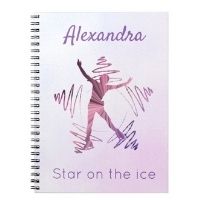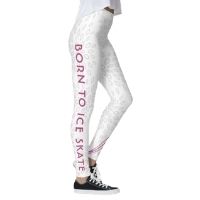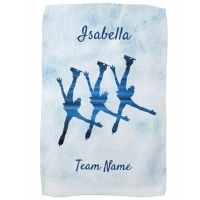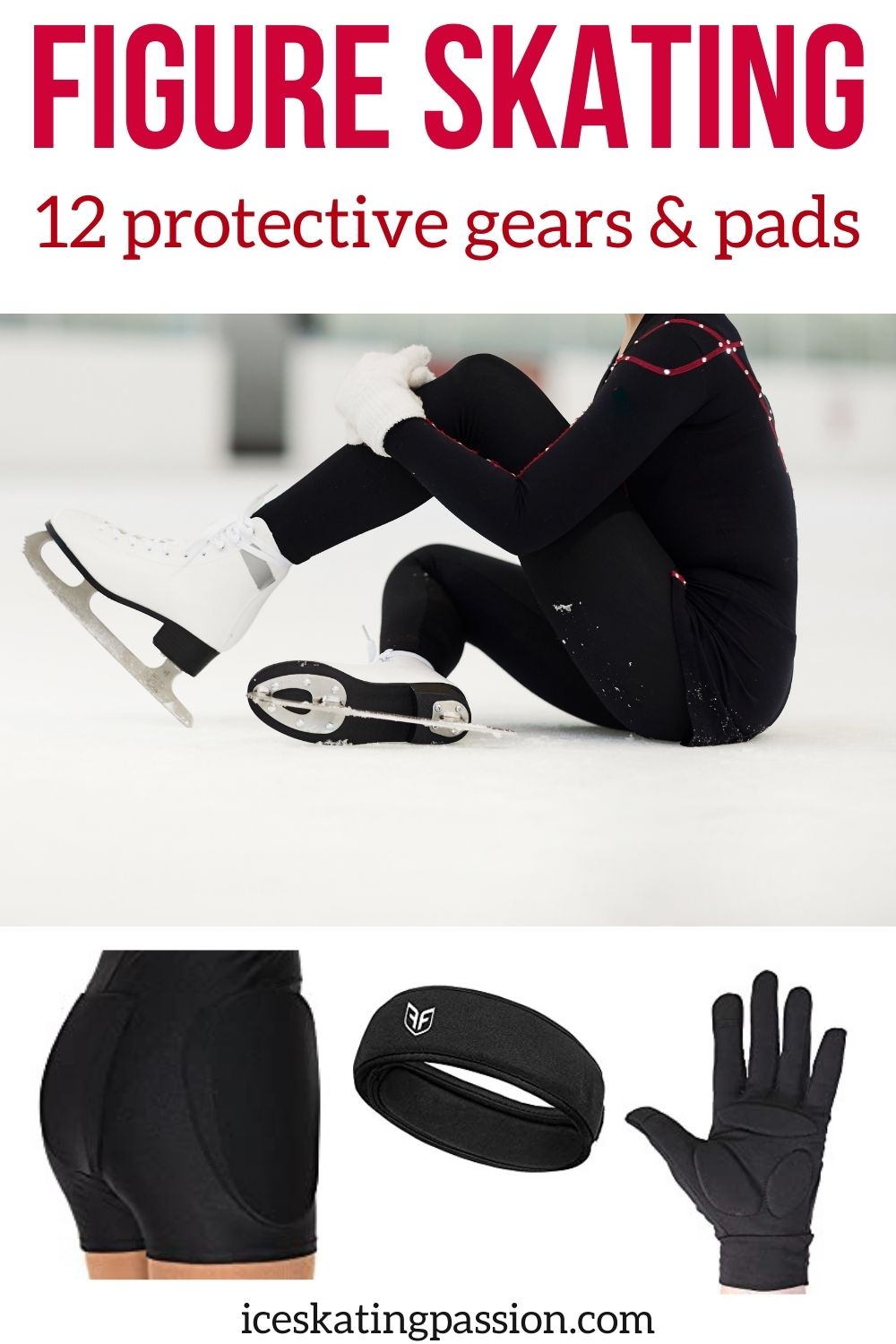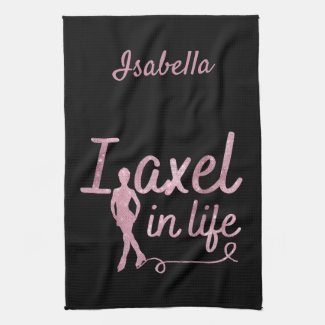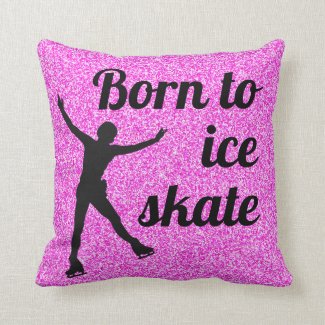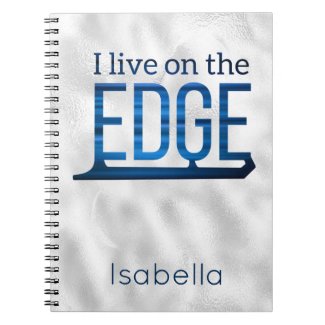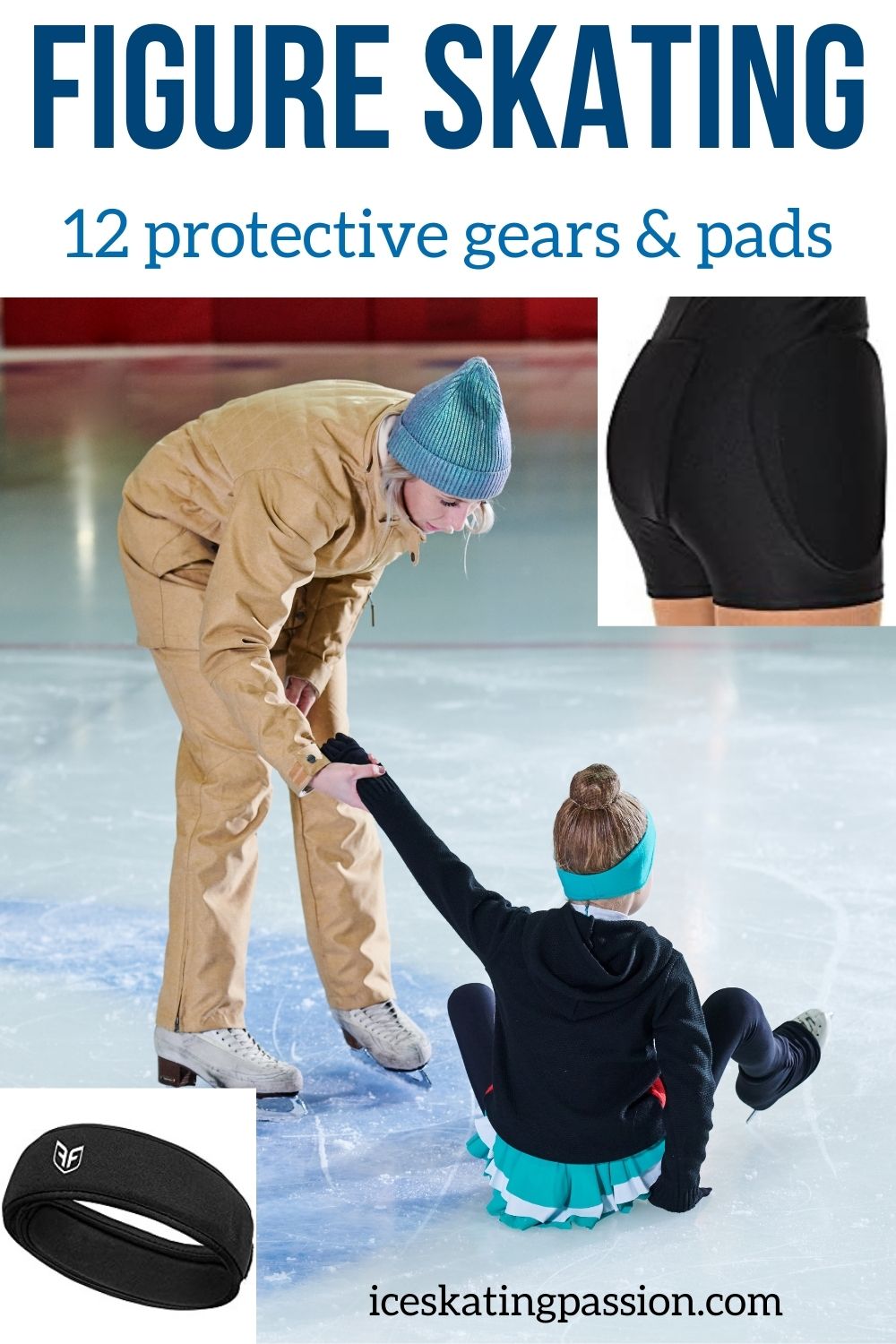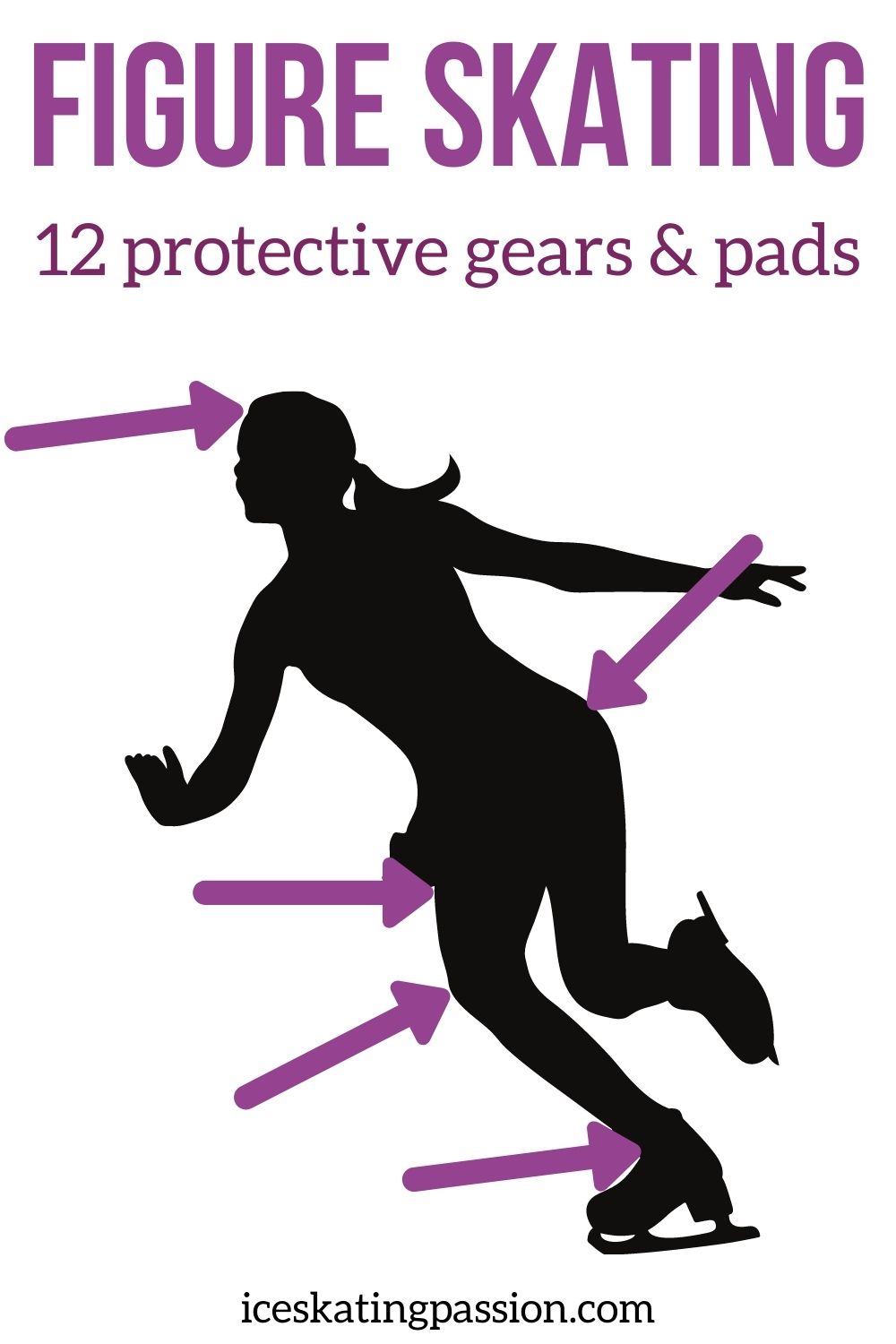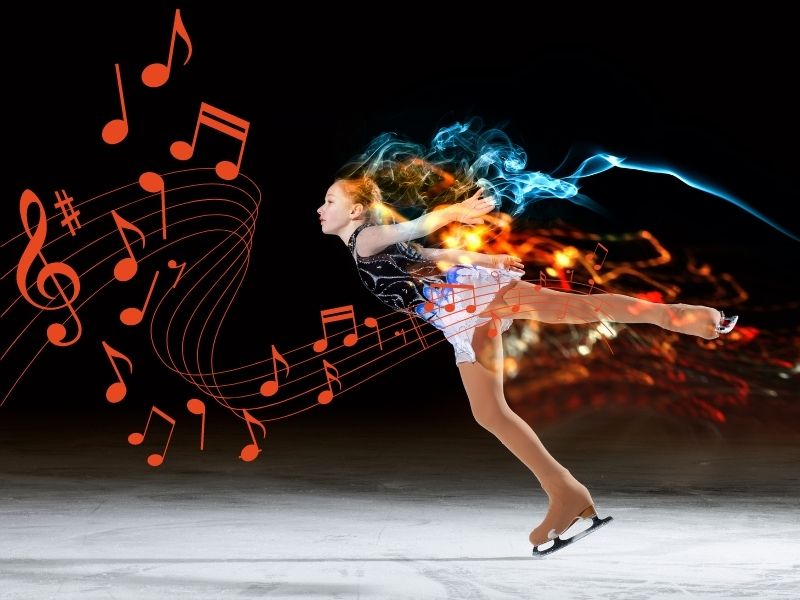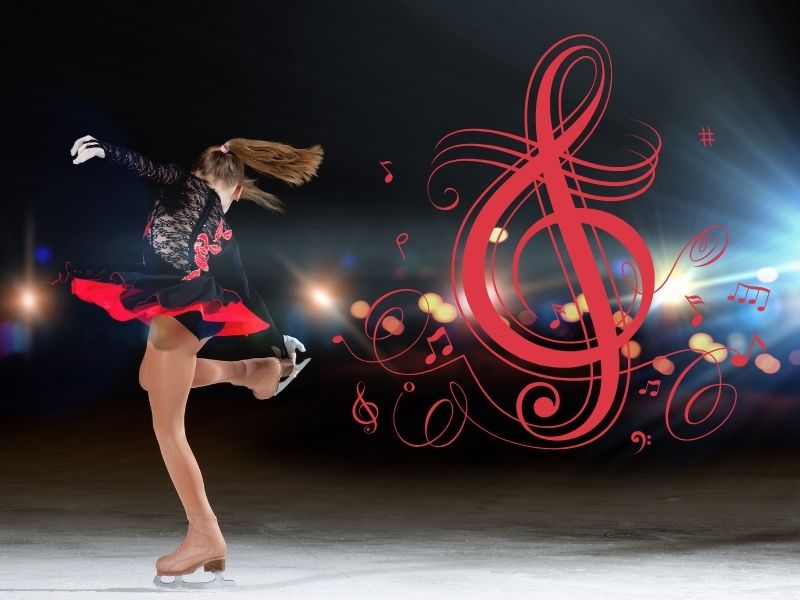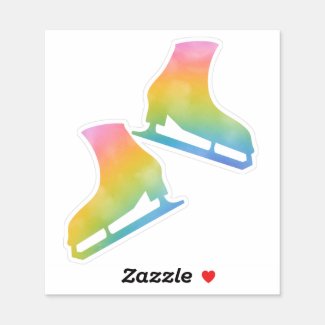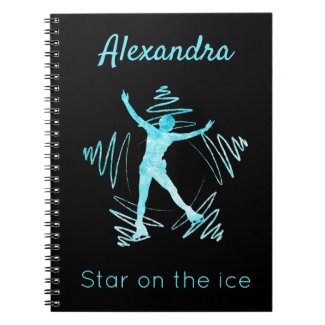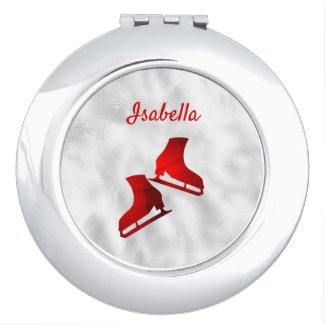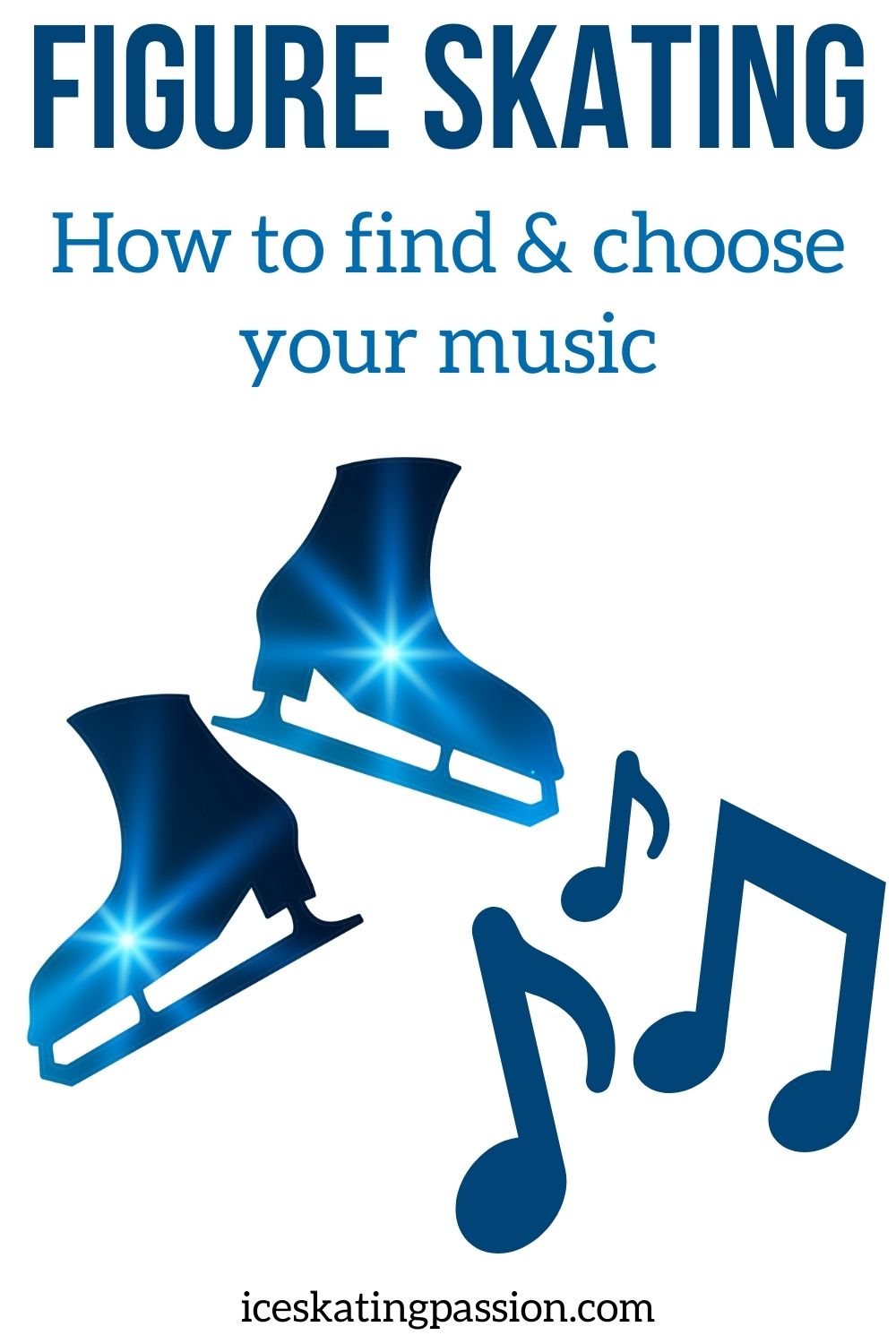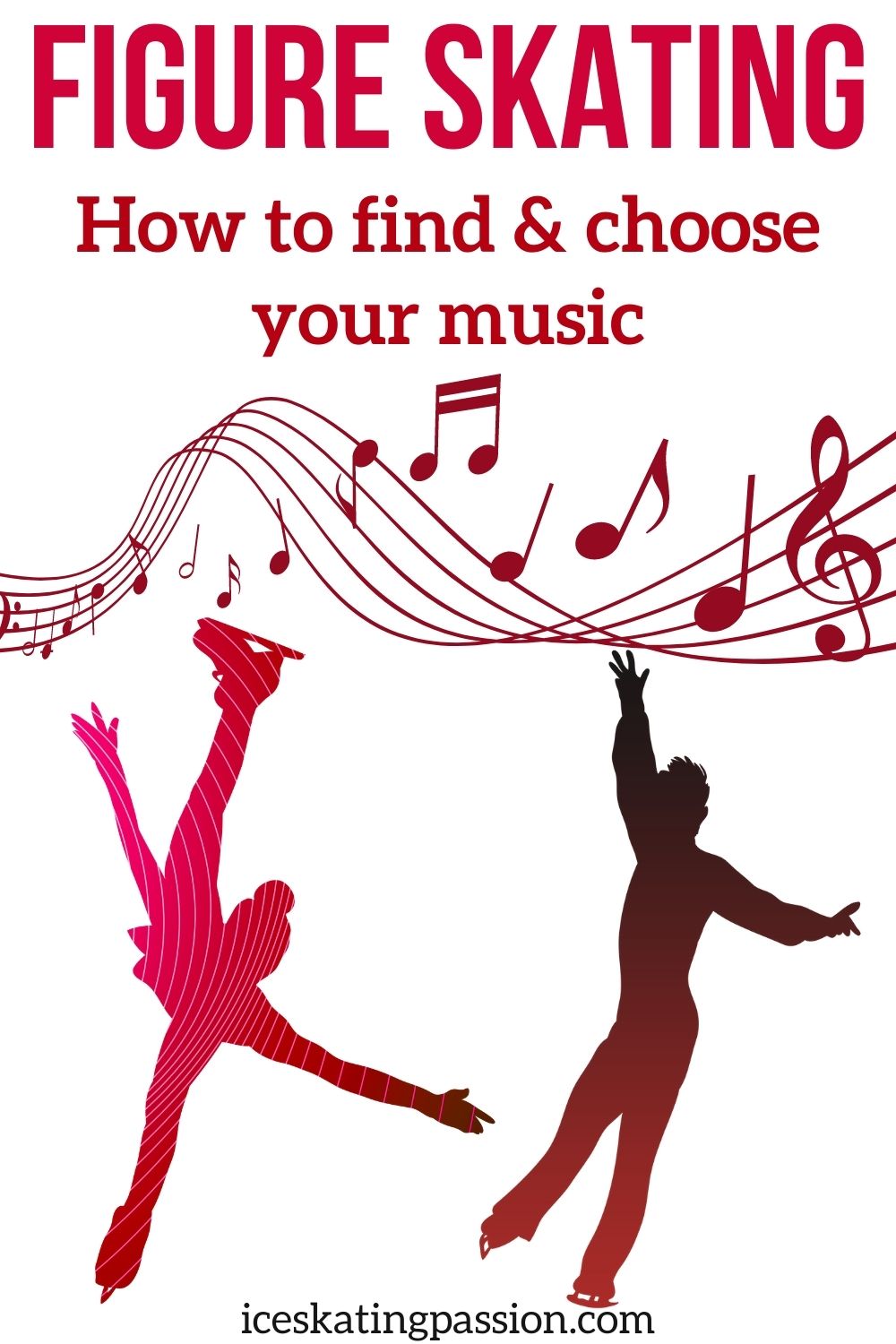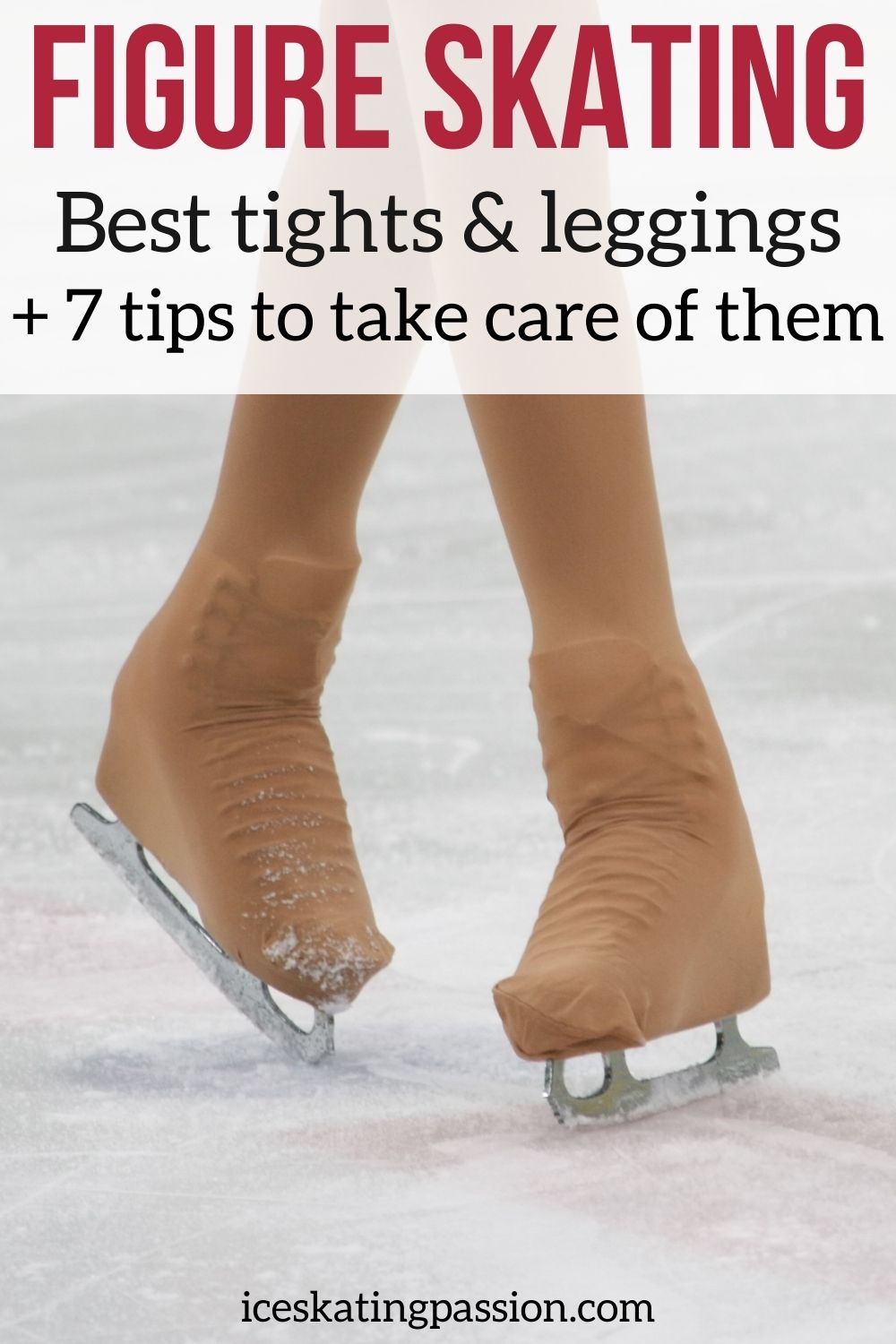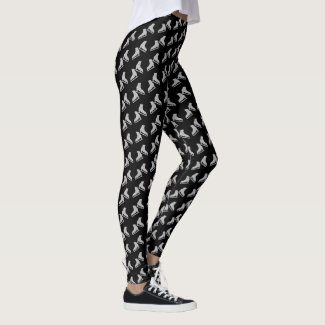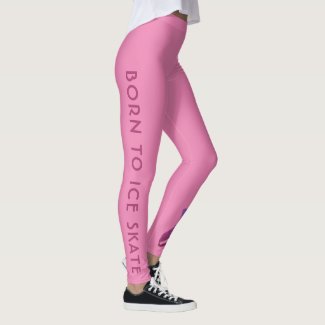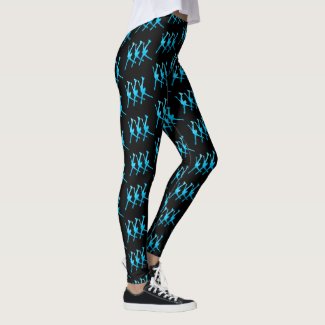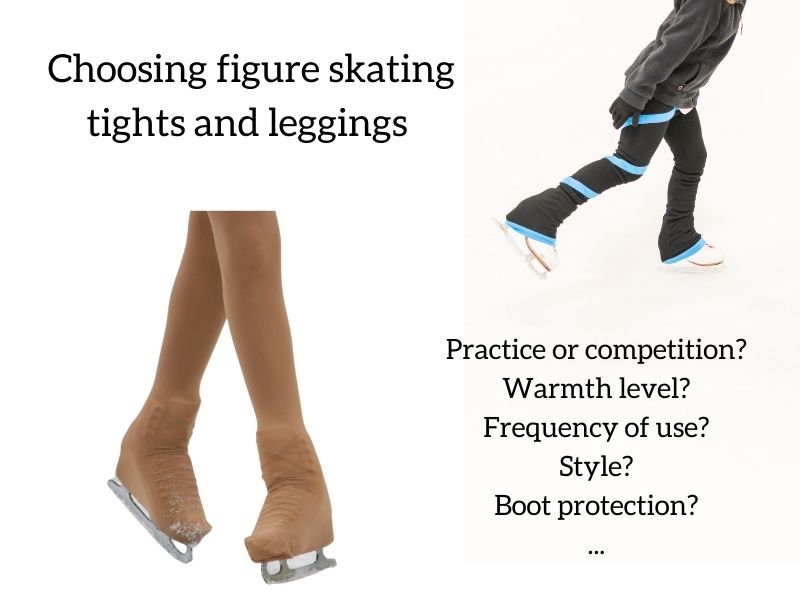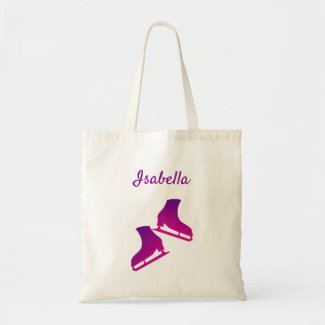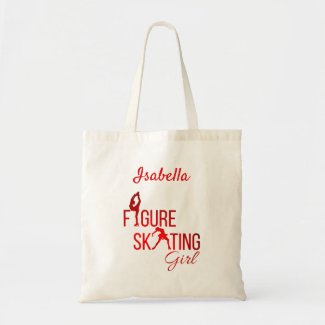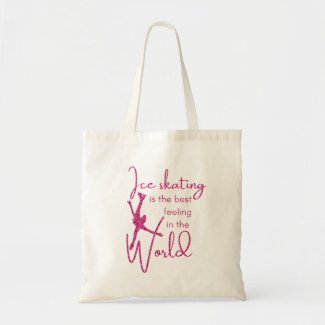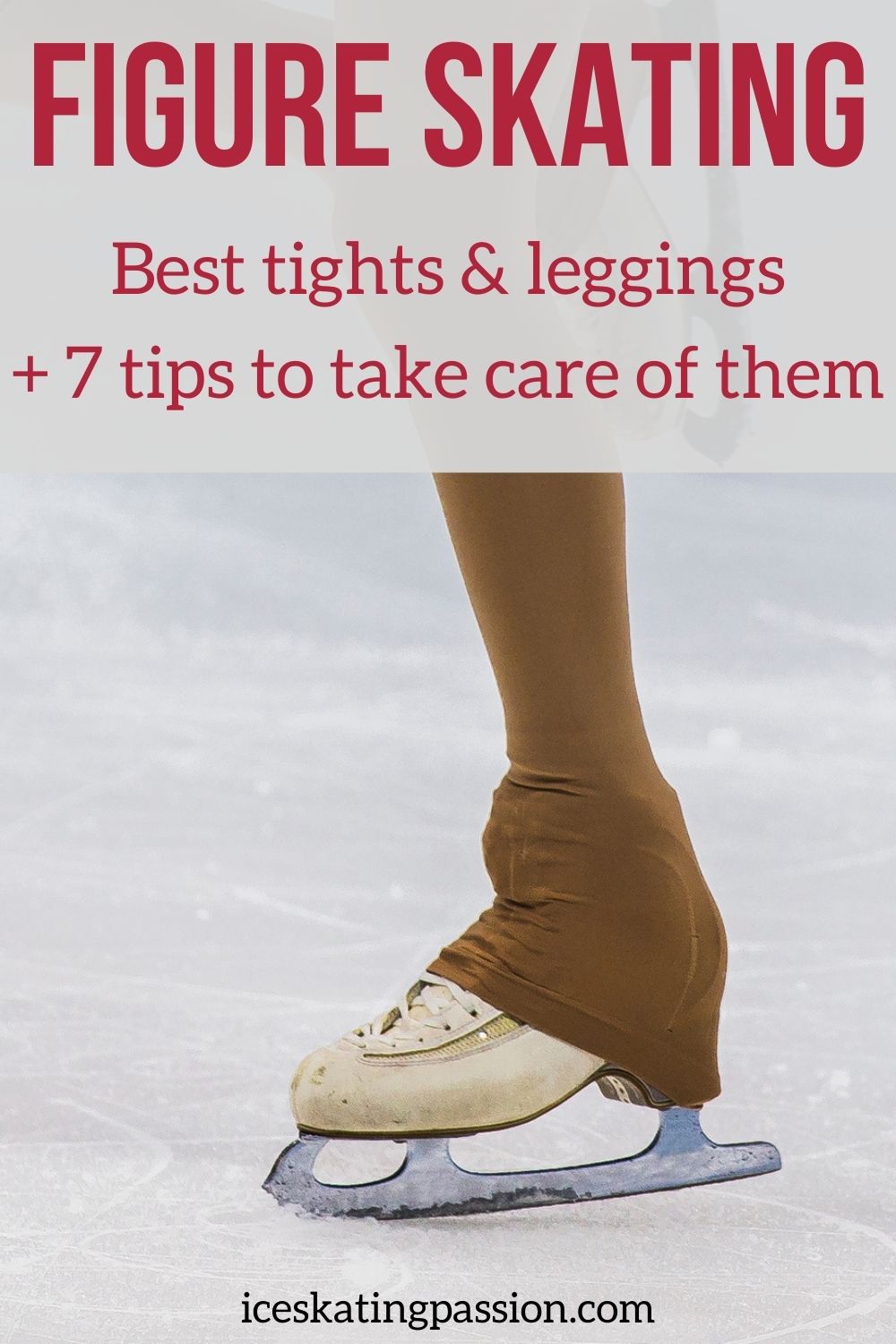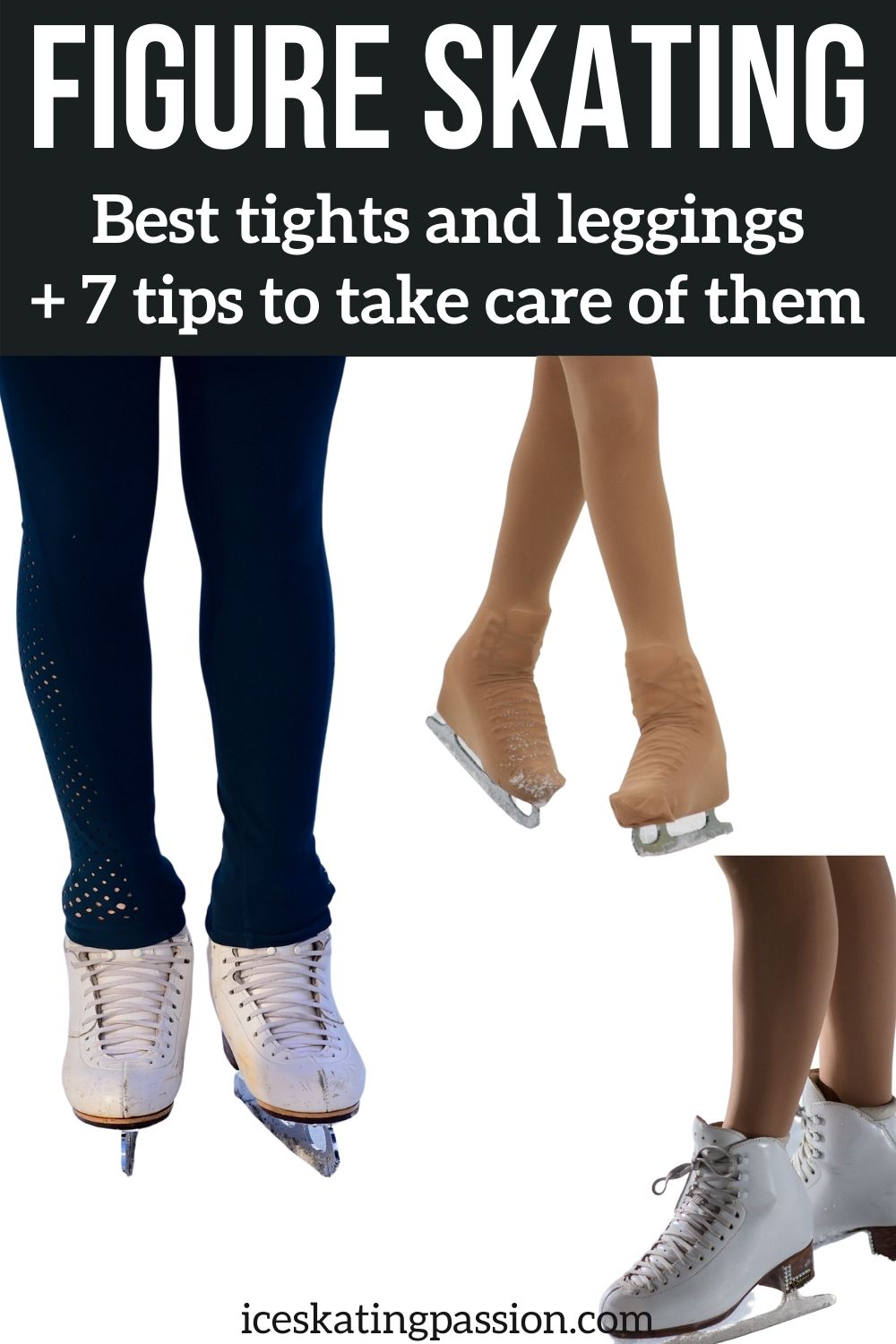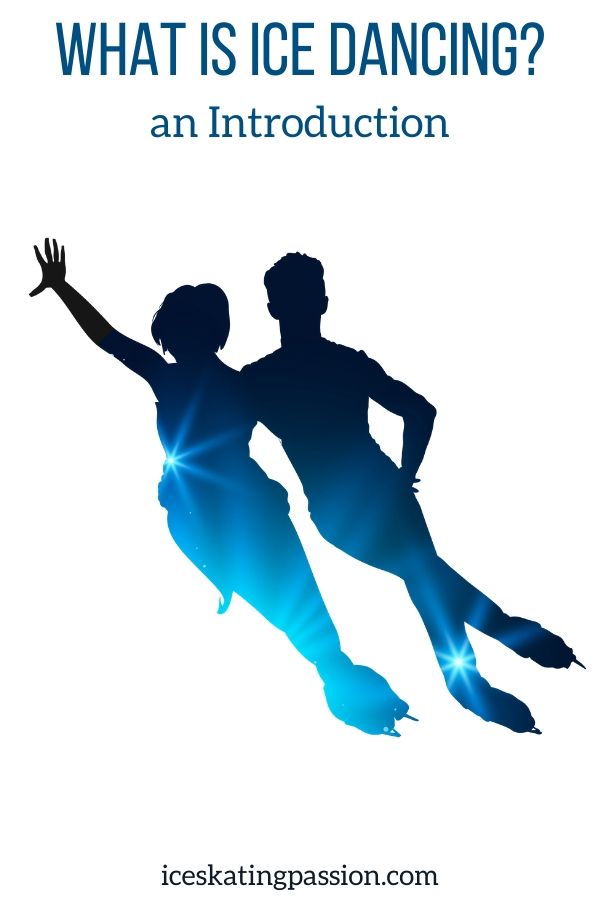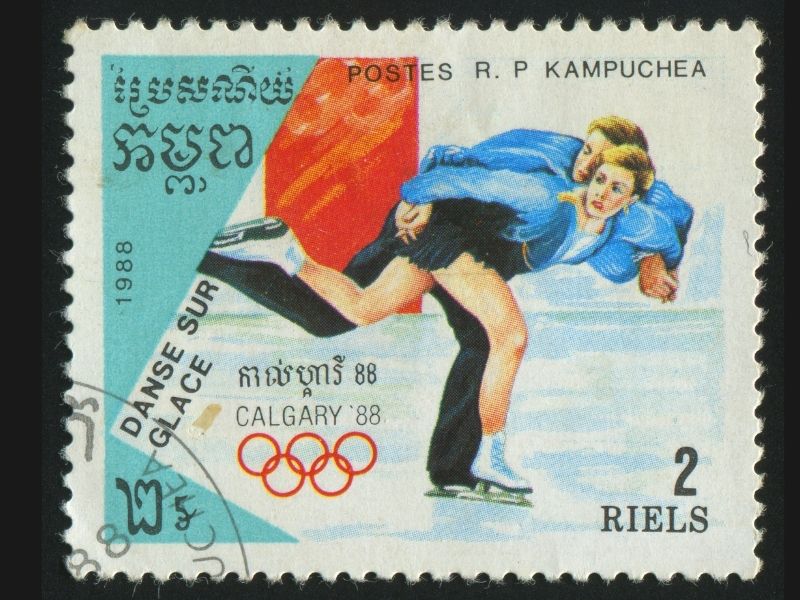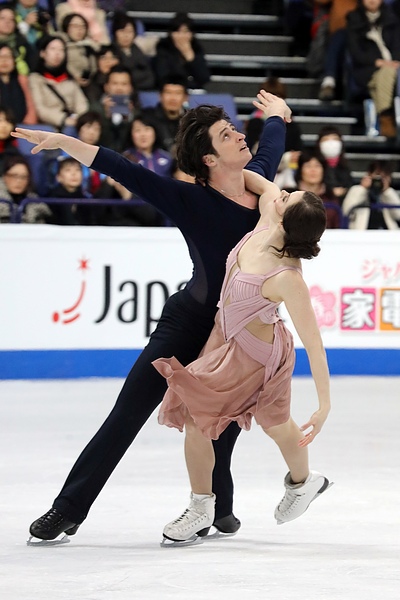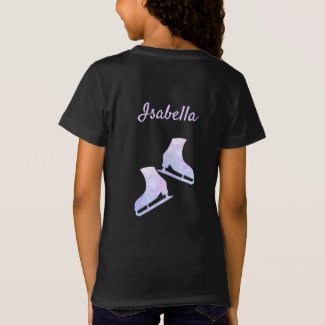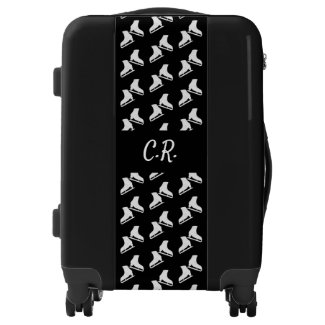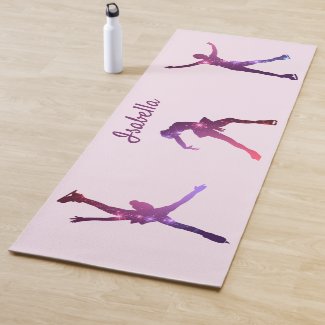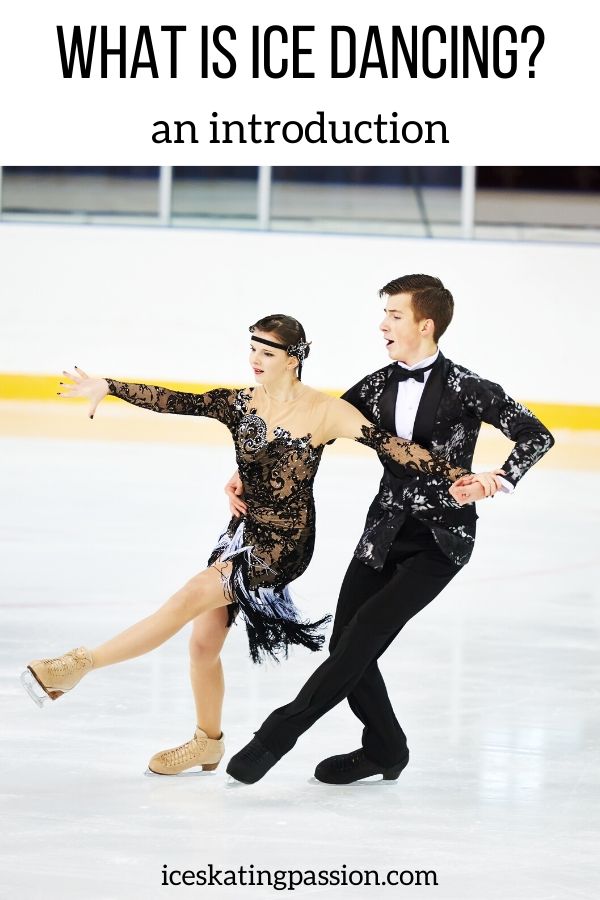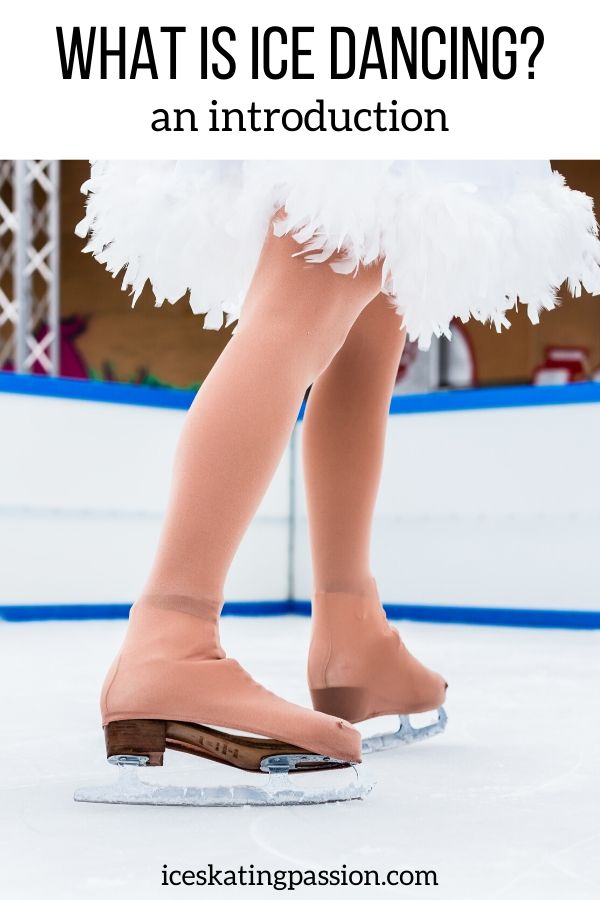Should you wear figure skate boot covers? How to choose them? How can I make my own ice skate covers? All your questions answered...
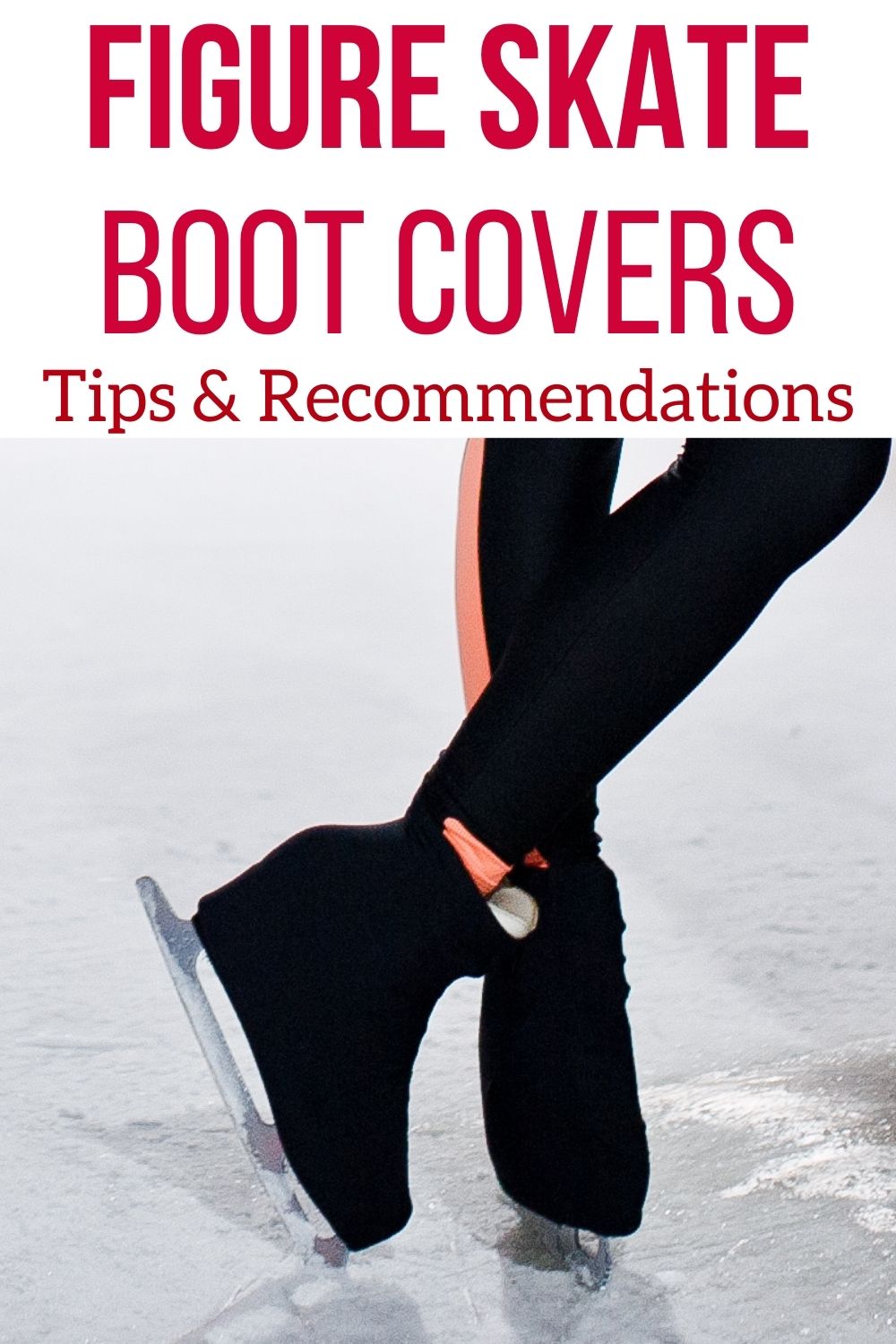
This article contains affiliate links. If you purchase using my link, I get a commission at no extra cost to you (learn more).
Why some figure skaters use boot covers? and others don't?
What are boot covers?
Boot covers are pieces of tissue (Lycra, Spandex, polyester) in the shape of an ice skate with an elastic at the angle and clips at the bottom. They are placed over the skates covering the whole boots.
The PROS of wearing boot covers
- PROTECTION - The main reason to wear boot covers is to protect the ice skate. Most figure skate boots are made of leather. And under it are sharp blades. When doing moves with one foot or both feet in the air, there is a risk that the blade of one skate damages the boot of the other.
Figure skates are an investment. You want them to last a long time and stay in good condition. See my other tips to take care of your skates. - LACE HOLDING - Another detail one can enjoy with boot covers is that they keep the ears of your lace knot away from the hook of the opposite skate. When you are lacing your skates, at the ankle level, you have loops dangling. I can tell you that when one loop gets stuck in a hook, it can be painful!
- COLORS - It is also a way for the skaters to express their mood. Younger skaters often enjoy wearing bright colors on their skates. Covers can be bought and sewn in many colors and designs. They can match your training clothes or not.
- MEN / WOMEN SKATES - another reason related to colors is that traditionally, women wear white skates and men wear black skates. I personally don't care. But some do. There is a large choice of white skates and better pricing for them. So, men sometimes buy white skates and wear black covers on them.
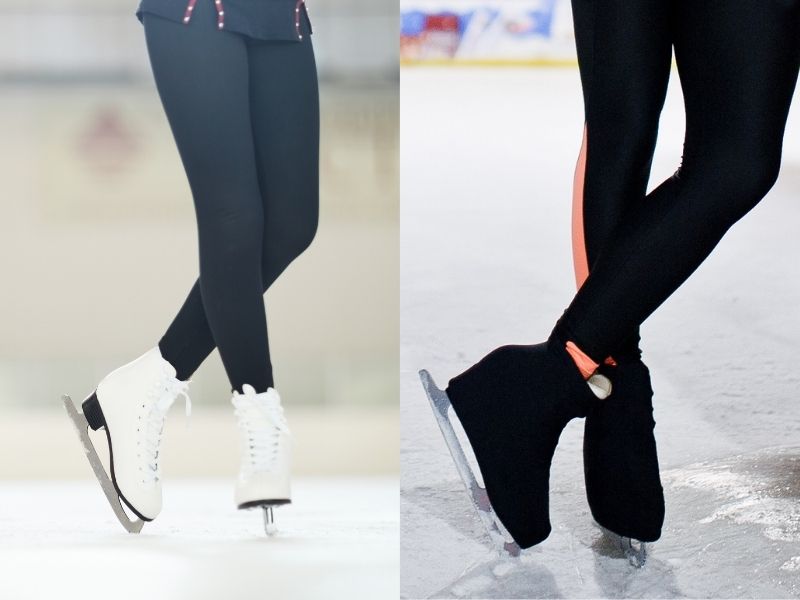
Figure skate boot covers or no boot covers?
The CONS of wearing boot covers
- They make the foot look heavy and distract the attention, cutting the lines of the leg. I will never forget the time, during summer camp, the national coach sent me off the ice to remove my covers because it is all she could see. Granted, they were neon yellow. But still, after that, I rarely wore covers. Make sure to check the preferences of the coach.
Best figure skate boot covers to buy
What to look for when buying ice skate covers
- Durability / Material
The main objective is to protect your skate. You want, thus, for you skate cover to be "strong" and durable. However, a big snap from a blade will cut any fabric... so, be reasonable in what you ask the cover to be.
Covers should be made of an elastic material so that it snugs the boot well.
Make sure to read the reviews to have an idea of the quality of the cover
No one brand really stands out over others.
- Size
If you are making the cover yourself, it is good because you can do the exact size you want.
Otherwise, purchased models are often "one size fits all" or child/adult. Therefore, they are often not ideal for very small skates or very large ones.
Again, make sure you read the reviews to understand how they fit.
- Style
There you can go wild.
If you are making them yourselves, you can choose any fabric you want as long as there is some elasticity.
And on the Internet, you can find models of various colors and designs.
About insulated or thermal boot covers
You can also find boot covers and Skate wraps with thermal insulation. At times, when you don't move much on the ice, feet can get cold.
For example, Edea has a pair made of neoprene.
And below are wraps.Those are easy to add without removing the skates - great when switching from practice to teaching / or to add remove as you feel during practice.
Over the boot tights
Finally, you can also use tights that go over the boot. This is best for competition as it makes the leg look longer.
However figure skating tights are quite an expense and can be damaged easily by hooks and blade cuts. Learn more about skating tights.
How to sew your own ice skate covers
But of course, if you want a pair matching exactly the color of the costume, or just want to add personal style, boot covers can be sewn by you or a seamstress.
I am sorry I am not a sewer. I tried to take notes about it. It should be enough for experience sewers but maybe not for beginners.
Materials
If you do decide to make your own figure skate boot covers, you will need:
- Fabric (prefer fabric with stretch such as Spandex or Lycra)
- Thread that matches the color of your fabric
- Elastic (1/4 inch)
- Hook and eyes to attach under the skate (or Velcro or snap button - but in my experience, hooks are best)
Make a pattern of the skate
- Trace the boot and ankle
- Add 1inch (2.5cm) for the width of the boot and the seam on the front
- Add 0.25inch (0.6cm) for the seam at the back
- Add 1inch at the top for the elastic and seam
- Add 2 inch (5cm) at the bottom for hem, seam and elastic
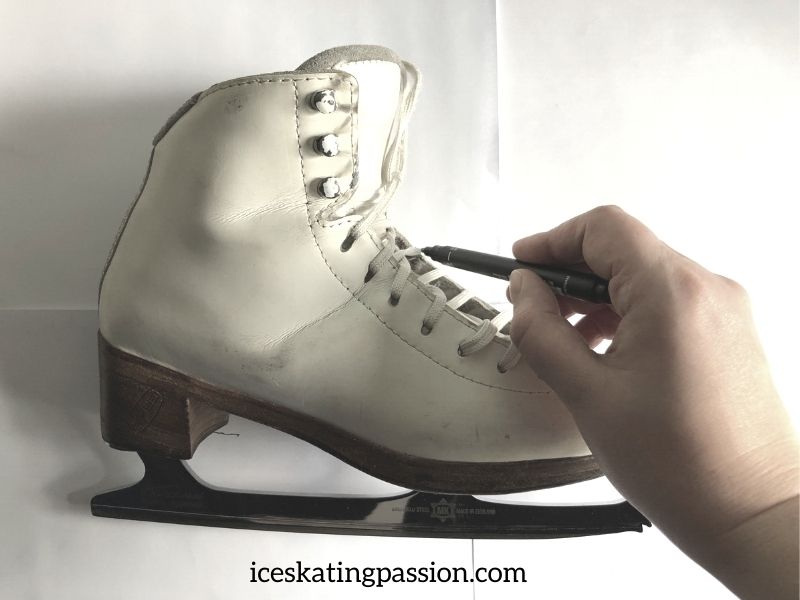
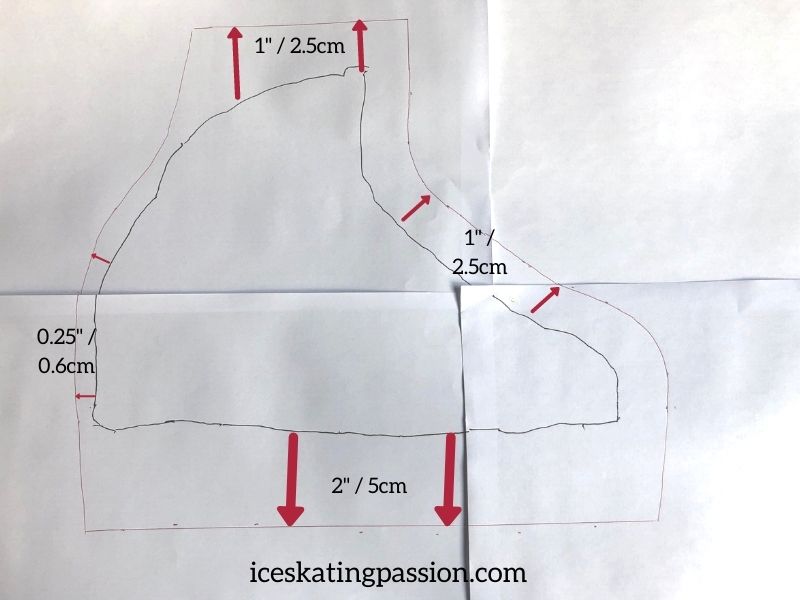
Sew the covers
- Cut 4 pieces according to the pattern (2 on each side)
- Sew both sides together (above the top of the skates and along the back and heel) with a stitch that stretches
- Serge the seams or trim
TOP:
- Fold the top leaving a hole for the elastic
- Measure the ankle (above the skate boot)
- Cut the elastic a little shorter that the ankle (so that it holds around it but remains comfortable
- Start feeding the elastic
- Make sure to have the elastic end overlap the stitch.
- Enter the elastic and finish stitching
BOTTOM:
- Measure the length around the blade just under the sole
- Cut the elastic a little shorter
- Start feeding the elastic
- Make sure to have the elastic end overlap the stitch.
- Enter the elastic and finish stitching
- At the boot arch, add a hook and eye / or Velcro, so that it attaches better
- Sometimes we add a second hook/eye towards the front, to be sure it does not move
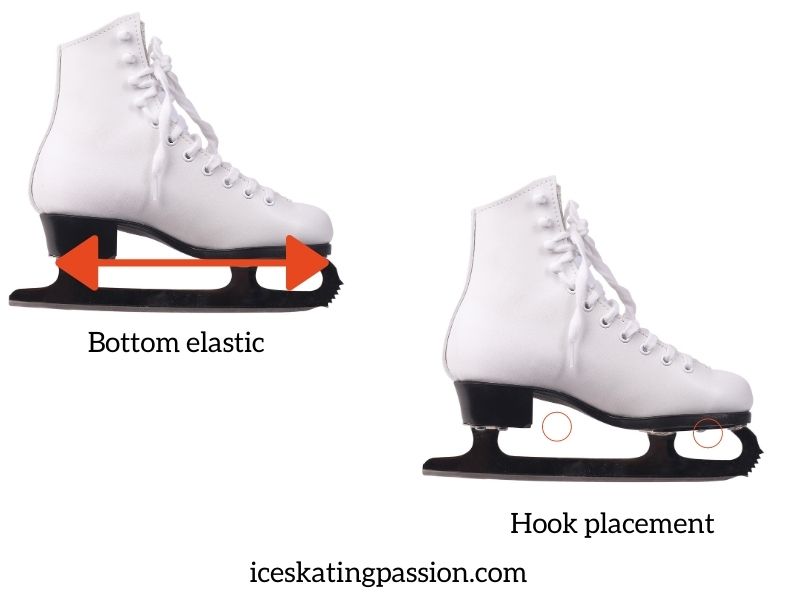
Care for your figure skate covers
Like all your figure skating equipment, you must take care of your boot covers so that they last longer and protect your skates better.
- BEFORE USE - make sure to wash your covers before using them (you should do that for any pieces of clothing)
- AFTER PRACTICE - inside your ice skating bag, make sure to place your covers away from your skates after practice, they often are wet and you should keep your skates as much as possible in a dry environment outside of practice
- BACK AT HOME - Make sure you lay down your covers to dry out.
Alternatives: taping your skates or dying your skates
If you don't enjoy boot covers because they make them look bigger and because you don't see the laces and hooks, there are a few other solutions to consider.
Taping your figure skates
Wearing boot covers is not the only way to protect your figure skates.
Another technique that many skaters enjoy is taping your skate.
You place it mostly just above the sole. You can remove it for competition, and add it again for practice
Dying your skates
A less popular option is to use leather dyes:
- to change the color of your skates (for example if you bought white skates and want them black)
- or to correct small color issues on your skates after having issues
I am not an expert on the subject.
I don't know the impact on the long term. I recommend trying on pieces of leather before to understand quantities and seeing how it is absorbed.
You might also be interested in:
